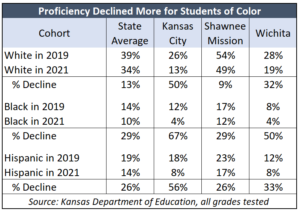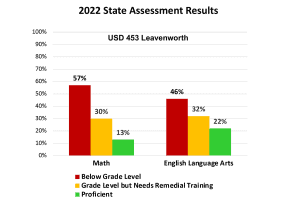The Kansas National Education Association won’t comment on a Harvard University study that shows student achievement declined with remote learning during the pandemic, with minority students suffering the greatest learning loss, despite claims by large teacher unions a return to classroom instruction was “racist.”
Thomas Kane, professor of education at Harvard, and one of the study’s authors summarized the findings:
”Where schools shifted to remote learning, gaps widened sharply. Over the last 30 years, there has been a gradual closing in both the Black-White and Hispanic-White achievement gaps. The latest assessment was conducted between January and March of 2022. Our results imply that when those results come out later this year… there will be a decline nationally, especially in states where schools remained remote, and gaps will widen sharply for the first time in a generation.”
Kane argued the gap came down to how much time districts spent away from the classroom, saying “districts that spent more weeks in remote instruction lost more ground than districts that returned to in-person instruction sooner.”
The Sentinel reached out to the KNEA for reaction to this study, but none was provided. Just over a year ago, the union provided written testimony in opposition to Senate Bill 235 requiring school districts to provide an in-person attendance option for students. KNEA preferred that mandates come from local school boards. The bill passed the Senate but died in the House.
 Kansas achievement numbers provided by the state Department of Education reflect the Harvard findings. In 2019 (pre-pandemic), 39% of White students were proficient in math; only 34% were proficient in 2021, representing a 13% decline in the proficiency rate. But the proficiency rate dropped 29% for Black students and 26% for Hispanic students.
Kansas achievement numbers provided by the state Department of Education reflect the Harvard findings. In 2019 (pre-pandemic), 39% of White students were proficient in math; only 34% were proficient in 2021, representing a 13% decline in the proficiency rate. But the proficiency rate dropped 29% for Black students and 26% for Hispanic students.
The falloff was even worse in some districts that were notorious for keeping kids out of classrooms. White students in Shawnee Mission, for example, fell by 9% but Black students dropped by 29% and Hispanic students fell by 26%.
Kane concluded:
“Shifting to remote instruction was like turning a switch on a critical piece of our social infrastructure that we had taken for granted.”



